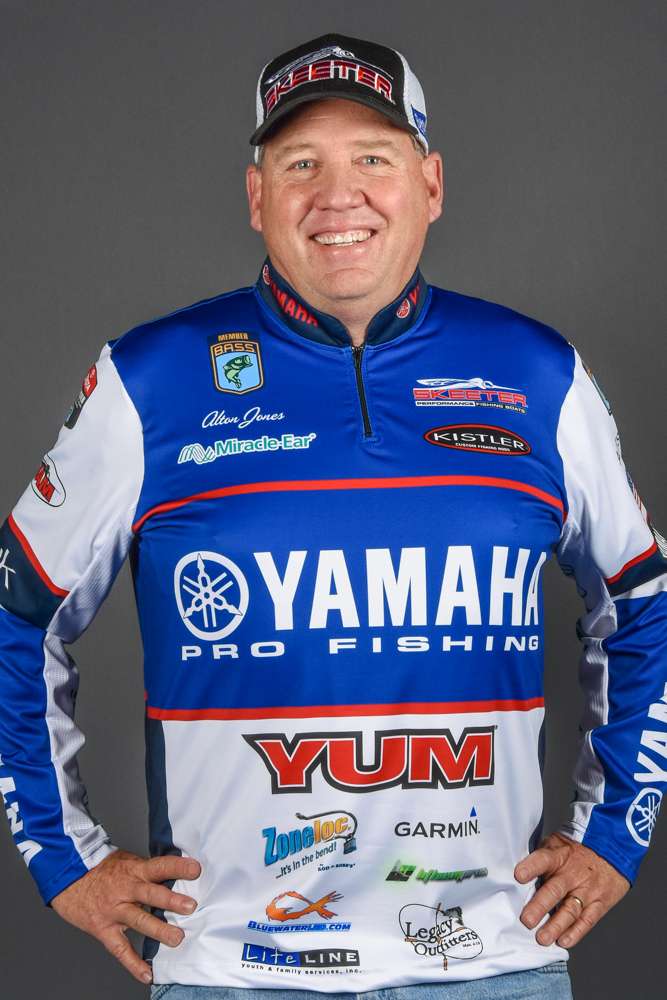Well, our most recent trip to Lake Falcon was a blast. I went with a buddy, Bryan Baker. The water is still way up, so like the last trip, this was all about the bushes and wood. We tried the ledges and dropoffs to no avail. There were several hot, slick days, but one day with 30-mile-per-hour winds.
I don't care where you go in the country; when the wind is blowing like that, the bass will eat a spinnerbait. Falcon is no exception. I kept trying to force the flipping bite into the wood, but when Bryan nailed three in a row, I had to tie on a Booyah spinnerbait. We then hit a stretch where not a second went by when someone wasn't hooked up. It was unreal.
We figured out that they were suspended in the trees, because flipping plastics sent the bait right below them. You couldn't fish it slow enough to make it effective. They were looking up to feed, and the spinnerbait was always in just the right place over those trees. We caught them up to 7 pounds on spinnerbaits, with a lot in the 2- to 4-pound range. That was a really fun bite to be on.
On our last day, it went back to being slick calm. As expected, the spinnerbait bite died, but that didn't stop us from trying it first thing in the morning. It didn't work, so it was back to the soft plastics. The ticket there was a Yum Dinger and a Yum Wooly Hawg Tail. Once we figured that out, we were calling our shots. They were still in the tops of the brush because we tried letting the bait settle on the bottom, but it never got bit there. It was when we were reeling it back up that they'd tag it. It's actually easier to get them out of the bushes this way because you don't have to thread the bait all the way down through the tree and then get them back up again. You could just look at a point and see the clump of bushes where there would be a nice bass. It was usually a stretch of five or six bushes that held the good ones.
Our biggest was in the 10-pound range. In two and a half days of fishing, we probably caught 160 or so fish. It was incredible. We had four in the 9-pound range. If you're wondering, I didn't get my personal best. I'm still after it, though. My best shot is going to be once the water recedes a bit — maybe 3 or 4 feet — so the bass have to start going to places like dropoffs and points. If they're there, my chances will go up dramatically. That said, Falcon is as predictable as it's ever going to be, because everything you're catching them on is visible to the naked eye. If you go now, it should be the trip of a lifetime.
On another note, we'll spend the weekend in Coleman, Texas, with Jimmye Sue's family. Little Alton is taking the Skeeter FX because he's practicing for the Bass Champs Championship in October, and this will be his last chance to practice because of school obligations. It's on O.H. Ivie, about 30 minutes away.
The dogs are all ramped up for the trip because they know what's going to happen: dove hunting. I love to hunt, but for me, working with the dogs is more enjoyable than shooting the birds. Seeing them enjoy their work and doing what they were bred to do is both thrilling and rewarding.
I can't wait to get a cooler of water, take a seat and wait for some birds to fly over. However, a lot of this is dependent on the rainfall. At the beginning of dove season, we usually get some rain here in central Texas. Dry spells are best because the birds are more easily patterned. When there's water everywhere, they scatter more and are harder to find. It's just like in bass fishing. You have to take into account the conditions and then determine what they're doing, be it a bass, deer or dove. Regardless of the rain, I can't wait to get out there with the dogs and let them work. I'll give you all a full dove hunting report in the next installment. I hope everyone had a happy Labor Day. Stay tuned!

